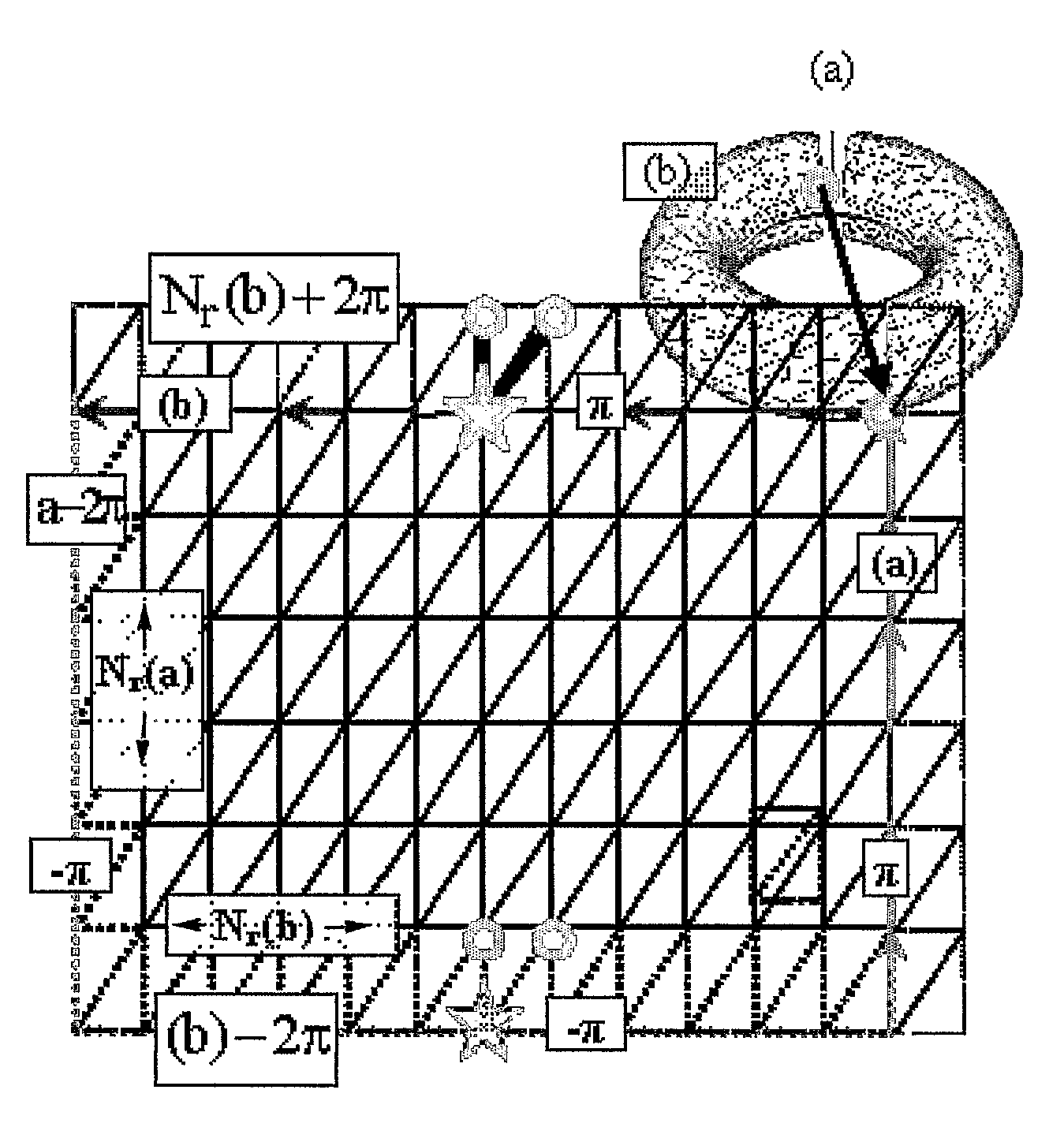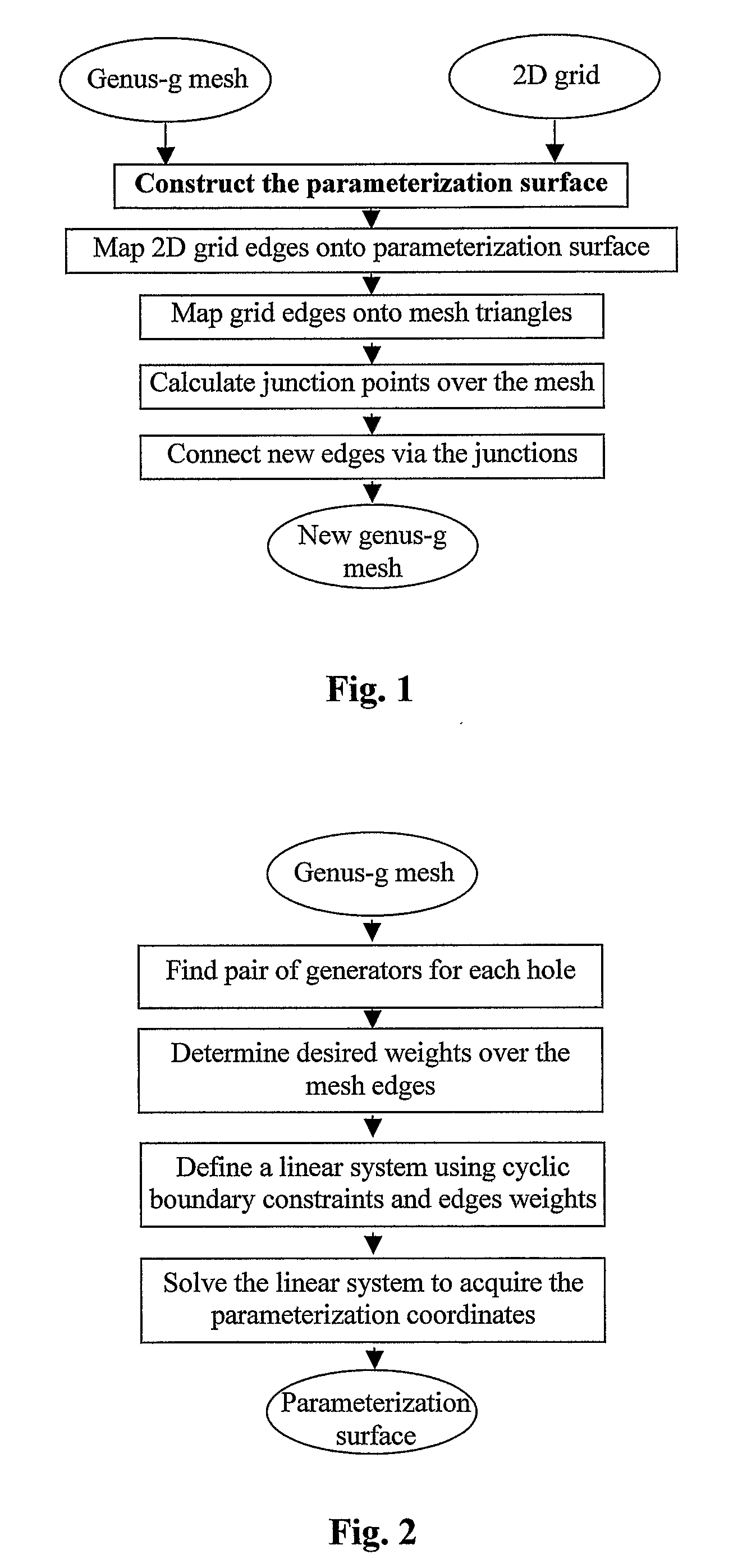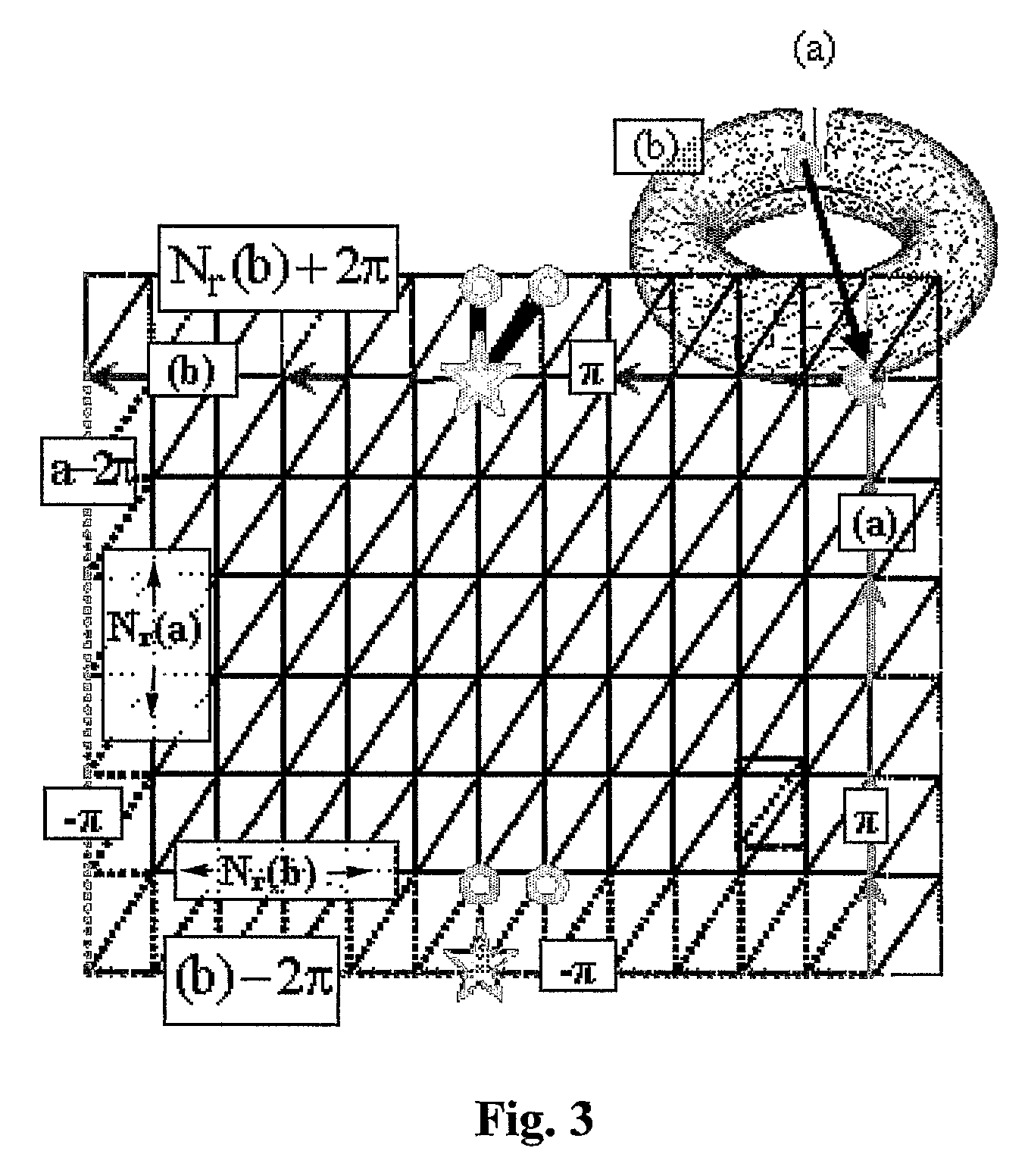Automatic remeshing by mapping a 2d grid on 3D genus-g meshes based on topological analysis
a topological analysis and mesh technology, applied in the field of 3d model remeshing methods and apparatuses, can solve the problems of time it takes to create a mesh model, inability to give a representation, and inability to meet the needs of users, so as to ensure continuity and minimize distortion.
- Summary
- Abstract
- Description
- Claims
- Application Information
AI Technical Summary
Benefits of technology
Problems solved by technology
Method used
Image
Examples
Embodiment Construction
[0050]In the following detailed description of various embodiments, reference is made to the accompanying drawings that form a part thereof, and in which are shown by way of illustration specific embodiments in which the invention may be practiced. It is understood that other embodiments may be utilized and structural changes may be made without departing from the scope of the present invention.
[0051]The present invention relates to a remeshing method and a system for the implementation of the method, which is based on mapping a 2D grid on the 3D meshed model. The criteria or elements of the new mesh can be defined directly on the 2D grid. With a parameterization approach that utilizes the topological analysis, the remeshing is invariant to the original mesh and therefore does not deform the original mesh. Mapping the 2D grid onto the 3D mesh minimizes distortion of the 2D elements and guarantee continuity. The 2D grid, the element shapes and the density can be changed straightforwa...
PUM
 Login to View More
Login to View More Abstract
Description
Claims
Application Information
 Login to View More
Login to View More - R&D
- Intellectual Property
- Life Sciences
- Materials
- Tech Scout
- Unparalleled Data Quality
- Higher Quality Content
- 60% Fewer Hallucinations
Browse by: Latest US Patents, China's latest patents, Technical Efficacy Thesaurus, Application Domain, Technology Topic, Popular Technical Reports.
© 2025 PatSnap. All rights reserved.Legal|Privacy policy|Modern Slavery Act Transparency Statement|Sitemap|About US| Contact US: help@patsnap.com



